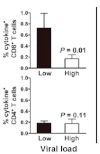Sang Froid in a time of trouble: is a vaccine against HIV possible?
- PMID: 19187552
- PMCID: PMC2647531
- DOI: 10.1186/1758-2652-12-2
Sang Froid in a time of trouble: is a vaccine against HIV possible?
Abstract
Since the announcement of the STEP trial results in the past months, we have heard many sober pronouncements on the possibility of an HIV vaccine. On the other hand, optimistic quotations have been liberally used, from Shakespeare's Henry V's "Once more unto the breach, dear friends" to Winston Churchill's definition of success as "going from one failure to another with no loss of enthusiasm". I will forgo optimistic quotations for the phrase "Sang Froid", which translates literally from the French as "cold blood"; what it really means is to avoid panic when things look bad, to step back and coolly evaluate the situation. This is not to counsel easy optimism or to fly in face of the facts, but I believe that while the situation is serious, it is not desperate.I should stipulate at the outset that I am neither an immunologist nor an expert in HIV, but someone who has spent his life in vaccine development. What I will try to do is to provide a point of view from that experience.There is no doubt that the results of STEP were disappointing: not only did the vaccine fail to control viral load, but may have adversely affected susceptibility to infection. But HIV is not the only vaccine to experience difficulties; what lessons can we glean from prior vaccine development?
Figures




References
-
- Plotkin SA, Farquhar JD, Katz M, Buser F. Attenuation of RA 27-3 rubella virus in WI-38 human diploid cells. Am J Dis Child. 1969;12(2):178–185. - PubMed
Publication types
LinkOut - more resources
Full Text Sources
Research Materials
Miscellaneous

